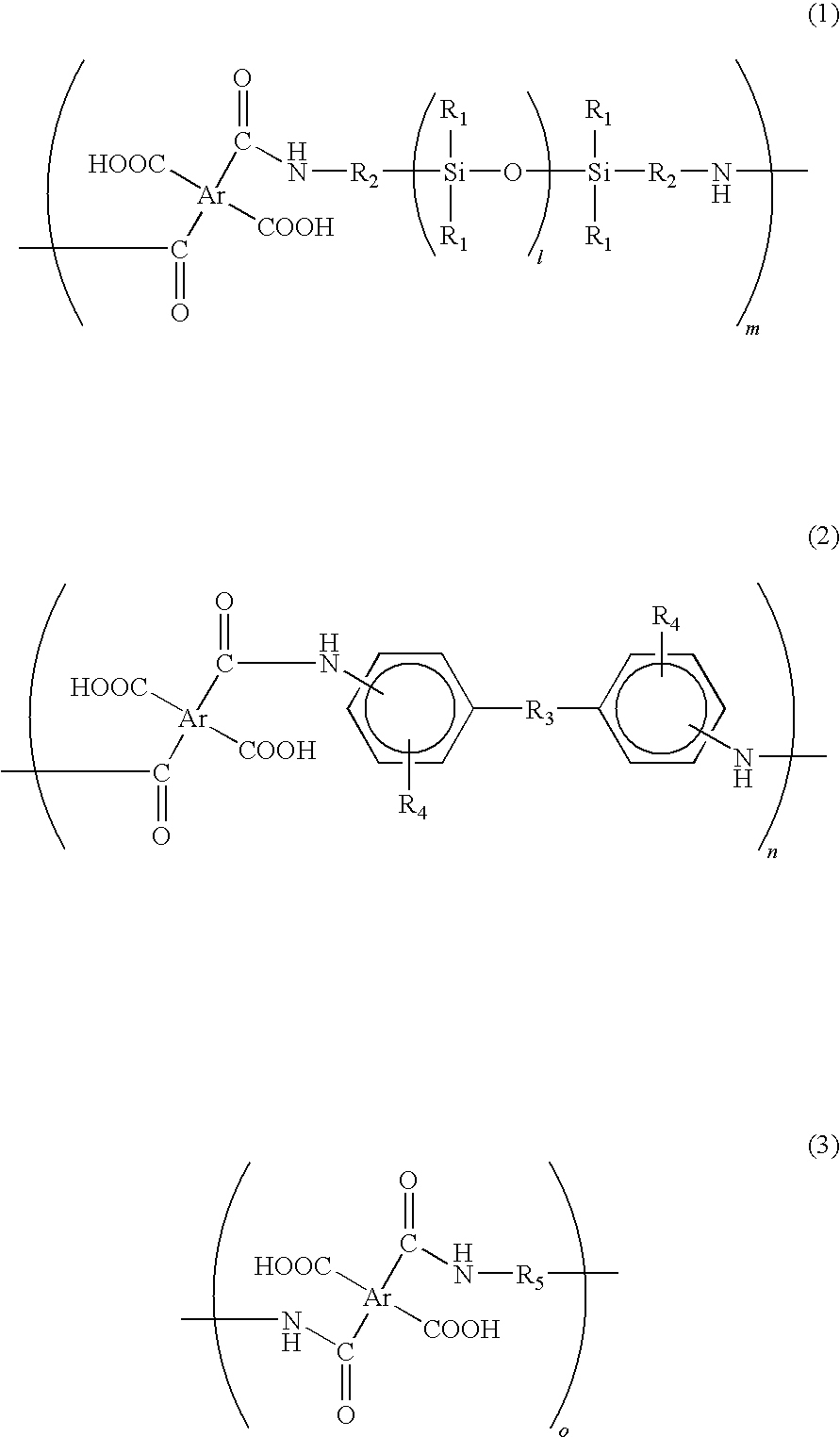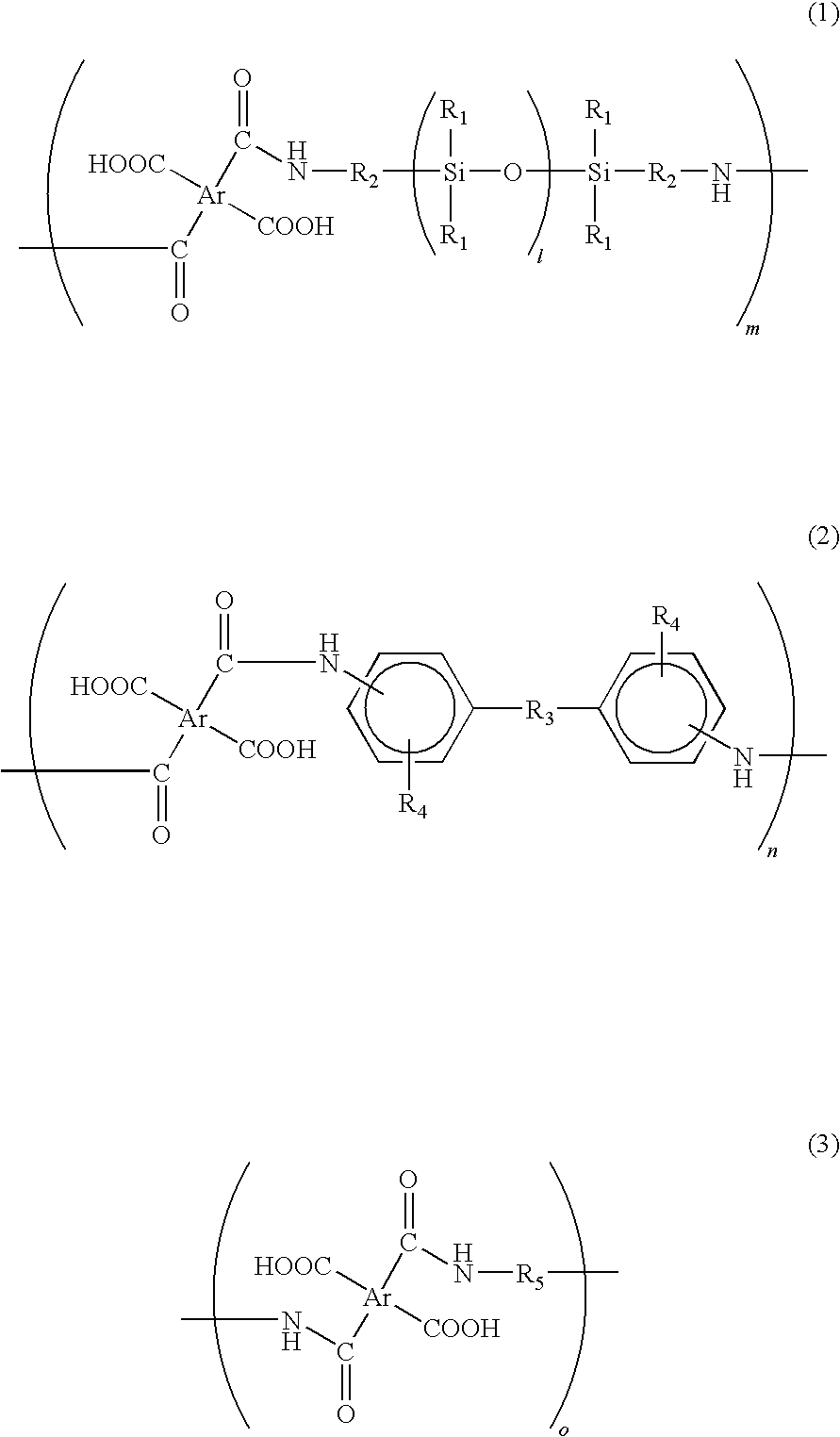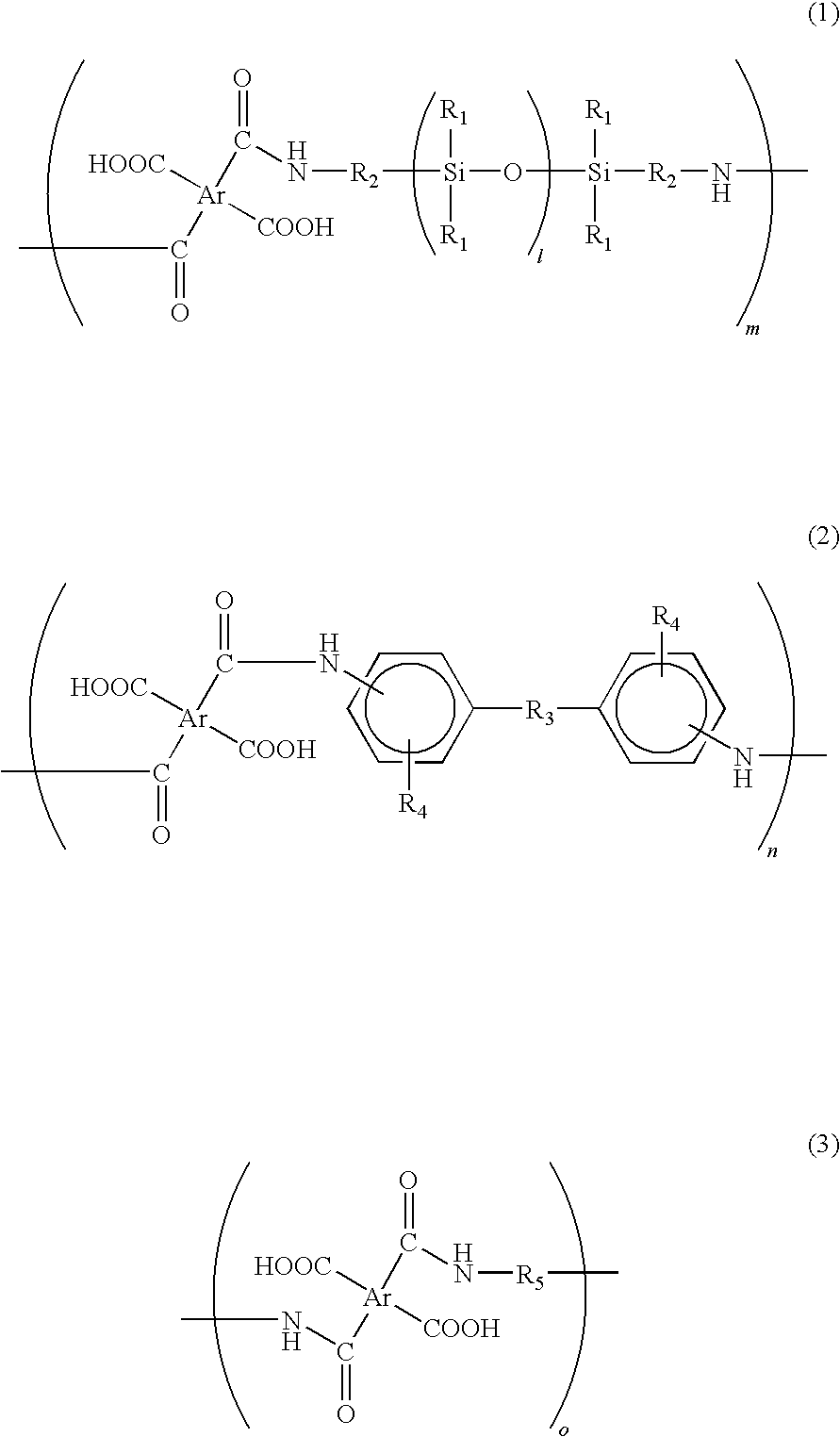Photosensitive Resin Composition and Circuit Substrate Employing the Same
a technology of applied in the field of photosensitive resin composition and circuit substrate employing the same, can solve the problems of substrate warping after processing, poor folding-endurance characteristics of materials, and reduced substrate after processing, and achieve excellent flexibility and well-balanced characteristics
- Summary
- Abstract
- Description
- Claims
- Application Information
AI Technical Summary
Benefits of technology
Problems solved by technology
Method used
Image
Examples
synthetic example 1
[0040]In a reaction chamber equipped with a nitrogen-inlet nozzle, 102.2 g of benzophenone tetracarboxylic dianhydride (BTDA) was dissolved in 460 g of dimethyl acetamide and then the reaction chamber was cooled on ice. Subsequently, the resultant was added with 15.0 g of 2,2′-divinyl-4,4′-diamino-biphenyl, i.e., a diamine in which R3 of the formula (2) was a direct bond, an amino group was located on a para-position, and a vinyl group was located on a meta-position. Subsequently, 188.4 g of siloxane diamine (BY16-853X, manufactured by Dow Corning Toray Co., Ltd.) having a number average molecular weight of about 750, in which R1 of the formula (1) was CH3, R2 was (CH2)3, and l was 7 to 8, was dropwise added to the reaction chamber for 1 hour under nitrogen atmosphere. After the dropping, the inner temperature of the reaction chamber was returned to room temperature and then content thereof was stirred for 5 hours under nitrogen atmosphere, thereby obtaining an aimed siloxane-contai...
synthetic example 2
[0041]In a reaction chamber equipped with a nitrogen-inlet nozzle, 93.3 g of biphenyl tetracarboxylic dianhydride (BPDA) was dissolved in 450 g of dimethyl acetamide and then the reaction chamber was cooled on ice. Subsequently, 5.0 g of the above 2,2′-divinyl-4,4′-diamino-biphenyl was added to the reaction chamber. Subsequently, 188.4 g of BY16-853X was dropwise added to the reaction chamber for 1 hour under nitrogen atmosphere. After the dropping, the inner temperature of the reaction chamber was returned to room temperature and then the content thereof was stirred for 5 hours under nitrogen atmosphere, thereby obtaining a siloxane-containing polyamic acid resin solution.
synthetic example 3
[0042]In a reaction chamber equipped with a nitrogen-inlet nozzle, 102.2 g of benzophenone tetracarboxylic dianhydride (BTDA) was dissolved in 450 g of dimethyl acetamide and then the reaction chamber was cooled on ice. Subsequently, 237.8 g of BY16-853X was dropwise added to the reaction chamber for 1 hour under nitrogen atmosphere. After the dropping, the inner temperature of the reaction chamber was returned to room temperature and then content thereof was stirred for 5 hours under nitrogen atmosphere, thereby obtaining a siloxane-containing polyamic acid resin solution.
PUM
| Property | Measurement | Unit |
|---|---|---|
| Percent by mass | aaaaa | aaaaa |
| Percent by mass | aaaaa | aaaaa |
| Percent by mass | aaaaa | aaaaa |
Abstract
Description
Claims
Application Information
 Login to View More
Login to View More - R&D
- Intellectual Property
- Life Sciences
- Materials
- Tech Scout
- Unparalleled Data Quality
- Higher Quality Content
- 60% Fewer Hallucinations
Browse by: Latest US Patents, China's latest patents, Technical Efficacy Thesaurus, Application Domain, Technology Topic, Popular Technical Reports.
© 2025 PatSnap. All rights reserved.Legal|Privacy policy|Modern Slavery Act Transparency Statement|Sitemap|About US| Contact US: help@patsnap.com



